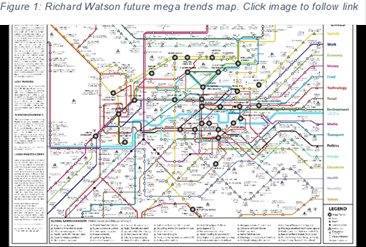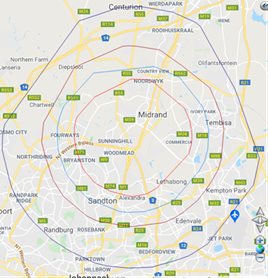Although South Africa is not quite at ‘post-pandemic’ stage yet, Lightstone - leaders in data analytics, take a look at key trends and themes as well as some encouraging opportunites that the ‘new normal’ is presenting in the retail space .
This pandemic has provided some tough operational environments for retail decision makers and even though we may find ourselves in a downward trend right now, these circumstances have forced us to look toward the future – perhaps sooner than initially anticipated.
Futurist, Richard Watson developed a mind map back in 2017 highlighting the future mega trends and technologies in a macro environment. The map predicts what 2050 may look like. As a result of COVID-19, these time frames have been brought forward to around 2035. By simply looking at the map itself, the large grey circles are referred to as ‘mega trends’ with the smaller circles as ‘what’s happening now’, and the triangles as ‘what’s happening next’. Delivery robots, as an example were identified as part of what’s happening next, but this technology – a meagre 3 years later - is already here and operational.

With regards to the small and local trends identified in Watson’s theory, thanks to what the world has recently experienced, we are already there, especially from a retail perspective. Convenience and simplicity coupled with the convergence of technology has seen a significant drive toward virtualisation and personalisation which is where the understanding of a customer becomes even more important.
“The retail industry needs to rethink the way they operate under the ‘new norm’”, says Roger Blewett, Geospatial Solutions Consultant for Lightstone. “The current environment offers retailers an extraordinary opportunity to think about omnichannel strategies, which marries the digital with the bricks and mortar retail space, that remains simple and convenient.”
With this new shopping trend comes a need for efficient retail transactions (e.g. limited queues), and an entirely different approach to brand loyalty where the visit to stores that the customers make is a worthwhile one. Retailers will need to start using more data centric insights and methodologies to understand their customers and create better shopping experiences.
“We have a huge amount for respect for retail decision makers. They need to understand the external environment from an economic perspective, as well as an internal environment where cultural and consumer behaviour becomes key,” says Blewett’s colleague Joe Spring, Senior Solutions Consultant at the company.
The retail environment is more complex now than it has ever been. Retailers need to plan for very different future needs where decisions will need to be made based on location management and turning that knowledge and data into solutions. Strategies will need to be based on an understanding of the landscape, time frame and consumer behaviour trends like the shift from regional centres to hyperlocal community stores over the last year which Blewett and Spring attribute to economic conditions and the increase in online shopping, over the lockdown period. “We’ve tried to simplify this by using our own ‘Maps and Apps’ approach where we are able to share complex data through simple solutions.”

The map (below) is specifically for the traffic around the Mall of Africa in Midrand, Gauteng representing 75% of the visits to the mall in Q1 and Q2 of 2020. The light and dark blue lines indicate where the Q1 (January – March) visits were coming from and the pink lines indicate the Q2 (April – June) visits which has clearly contracted substantially.
“Essentially this move to localisation and convenience shopping is not a simple shift,” says Spring, “It means that the super regionals will need to play a slightly different role in driving shopping behaviour and understanding consumers' future dependency on shopping malls. Shopping decisions will be based on customer loyalty and the experiences offered by that particular destination.
Straight out the ‘COVID gate’, Lightstone released the ShopSafe App which offered users a view of the peak shopping times of a specific mall so a) shoppers could plan their ‘safe’ shopping times and b) retailers could maintain a steady stream of customers as opposed to the traditional ‘peak’ times. This is an example of how customer behaviour is influencing retail activity.
From an e-commerce perspective, using this data to influence the infrastructure of e-commerce deliveries will help reduce repeat deliveries to the same location and protect a brand’s customer satisfaction score by limiting delays and non-deliveries. Partnering with the likes of What3Words that enables data companies to pinpoint locations will help online businesses reduce the number is abandoned carts due to insufficient location options available to online shopping customers.
“Data is an incredibly powerful tool in getting to Know Your Customer (KYC). By using this type of information strategically, online, offline and omnichannel retailers will be able to identify areas where they can grow and help define product and/or service activity either from you to them, or the other way around,” concludes Spring.




